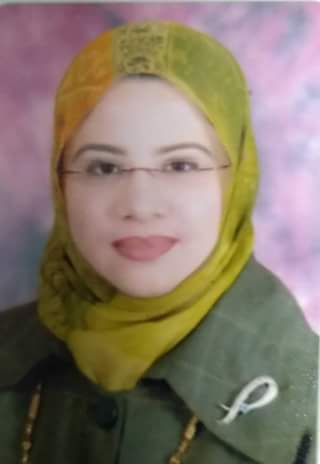2- B lymphocytes
B cell maturation:
- B cell maturation occurs in two phases
- in the bone marrow:
Immature B cells are produced from the common lymphoid progenitors (CD34+) under influence of IL-17 that develop in the BM till IgM+ immature stage.
- in secondary lymphoid tissues:
When B cells reach the IgM+ immature stage, they migrate to secondary lymphoid tissues (such as the spleen, lymph nodes, Peyer's patches, etc.) where they are called transitional B cells; some of these cells differentiate into mature B lymphocytes. Somatic hypermutation, affinity maturation and memory B cell formation occurs in the germinal center of lymph nodes.
- B cell development occurs through several stages, each stage representing a change in the genome content at the antibody loci.
|
Stage |
Ig |
||||
|
Progenitor (pro) B cells |
germline |
- |
Yes |
No |
|
|
Early Pro B cells |
undergoes D-J rearrangement |
germline |
- |
Yes |
No |
|
Late Pro B cells |
undergoes V-DJ rearrangement |
germline |
- |
Yes |
Yes |
|
Large precursor (Pre) B cells |
is VDJ rearranged |
germline |
IgM heavy chain (Mu) in cytoplasm |
Yes |
Yes |
|
Small Pre-B cells |
is VDJ rearranged |
undergoes V-J rearrangement |
IgM heavy chain (Mu) in cytoplasm |
Yes |
Yes |
|
Immature B cells |
is VDJ rearranged |
VJ rearranged |
IgM on surface |
No |
Yes |
|
Mature B cells |
is VDJ rearranged |
VJ rearranged |
No |
Yes |
Note that recombination of gene segments encoding Ig chain on one chromosome shuts off the other allele on the second chromosome (i.e. allelic exclusion) that ensure that each B cell express receptor of single antigen specificity.
- B cell that expresses high affinity to self antigens encountered in the BM they will die by apoptosis (i.e. clonal deletion/negative selection) or reactivate recombinase enzyme to alter the specificity of their antigen receptors (i.e. receptor editing). This mechanism of central tolerance reduces the incidience of autoimmune diseases.
- When the naïve mature B cell matches its specific antigen, the B cell proliferates and secretes a free form of those receptors (antibodies) with identical binding sites as the ones on the original cell surface.
- After activation, the cell proliferates and B memory cells would form to recognize the same antigen.
- CD20 is expressed on all stages of B cell development except the first and last; it is present from pre-B cells through memory cells, but not on either pro-B cells or plasma cells
B cell receptor:
(Diversity of B cell receptor: see chapter II)
- B-cell receptor (BCR) is a transmembrane protein complex composed of membrane immunoglobulin (mIg) and disulfide-linked heterodimers called Iga/Igb. Molecules of this heterodimer associate with an mIg molecule to form a BCR complex.
- mIg are usually membrane IgM and IgD, the antigen receptors of naive B cells, which have very short cytoplasmic tails. The cytoplasmic tail is too short to transduce signals.
- The Iga/Igb molecules are required for signal transduction and surface expression of membrane Ig molecules.
|
|
TCR |
BCR |
|
Components |
a and b chains |
Heavy and light chains |
|
domains |
One V domain and one C domain in each chain |
Heavy chain: one V domain and 3 or 4 C domains. Light chain: one V domain and one C domain |
|
Isotypes |
3 a/b, g/d and NKT cells |
2 (IgM and IgD) |
|
Isotype switching |
No |
Yes |
|
Number of combining sites to antigen molecule |
1 |
2 |
|
Mobility |
Rigid |
Flexible (hinge region) |
|
Antigen recognition |
On APC associated with MHC |
Direct |
|
Nature of antigen that may be bound |
Processed cell-bound peptide/MHC complex. |
Unprocessed antigen, macromolecules (proteins, lipids, polysaccharides) and small chemicals. |
|
Signal transduction molecules |
CD3 |
Ig-a and Ig-b |
|
Is secretion possible? |
No (it is a cell surface molecule) |
Yes (as antibodies in blood and body fluids) |
B cell surface markers:
B cells express
- BCR complex composed of membrane immunoglobulin (mIg) and disulfide-linked heterodimers called Iga/Igb.
- CD19 which is used to enumerate B cells in the blood.
- CD21 (complement receptor 2/CR2) allow the complement system to play a role in B-cell activation and maturation.
- CD22 that functions as an inhibitory receptor for B cell receptor (BCR) signaling.
- CD27 is a tumor necrosis factor receptor.
- CD32 which is a receptor for Fc of IgG.
- MHC-II.
- CD40 needed for class switching.
- Others as CD81, B7 and fas receptor.
Functions of B cells:
- Recognize antigen in soluble form by BCR.
- Mediate humoral immunity by antibody production.
- Act as APC.

